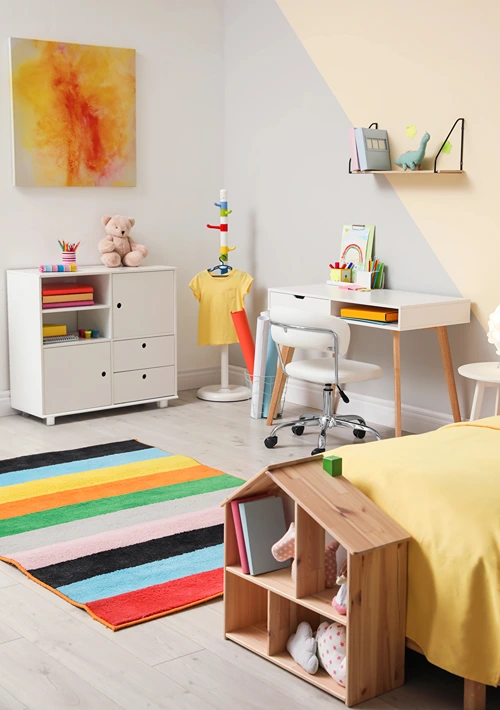Is Whitening Bad for Your Teeth? A Safe Approach for Kids and Teens
Proper nutrition is essential for kids and teens to aid their growth. However, some foods and beverages have a knack for staining white teeth. Pasta sauce, gummy bears, and soda are examples most children love to eat that leave their teeth looking yellow.
There’s a way to get your little one’s teeth whiter again. Whitening methods are readily available in most trusted dental clinics. Many patients, not just adults, undergo them to eliminate the stain that ruins a good smile.
But is whitening bad for your teeth? Is there a safe way for children to do it? This piece answers those questions and explores tips for kids to have teeth whitening done safely.
How Is Teeth Whitening Done?
You may have heard of at-home whitening products and considered using them on your child. They’re a great option to try if you’re new to the world of whitening teeth.
Many over-the-counter products include hydrogen peroxide or carbamide peroxide, both bleaching agents. These active ingredients break down the dark-colored compounds that create the stain until teeth appear whiter. Other products, like whitening toothpaste, have baking soda to reduce the surface stains. However, it can take a while before you see changes.
Professional teeth whitening often provides faster results and is generally safer. A reputable clinic may have gentle teeth whitening for families, which is ideal for kids and teens. You can receive an in-office service or a take-home kit. Either way, you’ll have an experienced dentist who’ll guide you (or your child) along the steps to whiter teeth.
Potential Risks of Teeth Whitening
Is whitening bad for your teeth? It will be if you’re doing it wrong or using sketchy tools. The process is considered safe overall if you use FDA-approved products or have it done by a licensed dentist. Many dental professionals see fewer tooth fractures or cavities in patients after a whitening procedure.

But that isn’t to say it doesn’t have risks. First, it’s not recommended for children with baby teeth. You may wait until all their permanent teeth have erupted. Second, high doses of hydrogen peroxide may induce tooth sensitivity in some kids. Lastly, some dental treatments might be too aggressive and damage the live tissue inside teeth. Bleaching may also cause gum irritation.
Safe Teeth Whitening Approach for Kids and Teens
Is whitening bad for your teeth? Not if you take the safe approach, especially for children.
The safest way to whiten your child’s teeth is to have it done professionally. Dentists have careful techniques to ensure the process doesn’t hurt your kid.
All processes begin with a thorough consultation and assessment. The dentist will evaluate your child’s oral health and check their teeth and gums’ condition. You’ll also identify the root cause of the staining. Sometimes, all they need is a deep cleaning and other professional treatments.
When your child is eligible for teeth whitening, the dentist will use a low-concentration bleaching agent. A bit of hydrogen or carbamide peroxide can remove the stain while minimizing tooth sensitivity or irritation.
Whitening procedures for children are always performed under professional supervision. That is if your kid is undergoing an in-office treatment. Dental clinics usually create custom-fit trays for your kid’s mouth if you opt for an at-home treatment. This will ensure the whitening gel evenly coats each tooth and doesn’t irritate the gums.
How to Keep Kid’s Teeth White

Professional whitening procedures are often effective. But your child’s teeth will continue to get stains without regular dental care. Teaching your child correct oral hygiene techniques keeps their teeth white longer.
The first thing is brushing their teeth twice a day. To encourage your child to brush their teeth, make the process more fun. When kids see brushing as a daily game rather than a chore, they’ll continue it. Teach them to floss, too, to get in between teeth.
Continue providing your child with nutritious meals. Limit sugary or acidic treats as much as possible. Let them use a straw for drinking colored drinks to protect tooth enamel. Snacks like cheese, apples, and walnuts keep teeth strong with calcium or encourage saliva production.
Dental hygiene provides double benefits: whiter teeth and excellent oral health. So, don’t forget to bring your child to their regular dentist appointments. Professional cleaning and monitoring ensure their pearly whites remain clean and healthy. You’ll see brighter smiles each time.
Final Thoughts
Is whitening bad for your teeth? The short answer is no. But if you want to whiten your child’s teeth, there are some caveats. It’s best to check with a pediatric dentist if your kid is good for teeth whitening.
With wise food choices and regular dental hygiene, your child can get a whiter smile. Guide them early to practices that improve oral health so that they may carry these habits as they grow.










